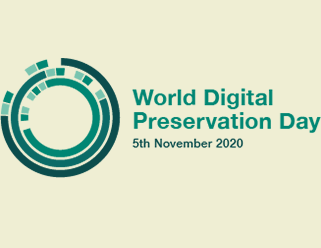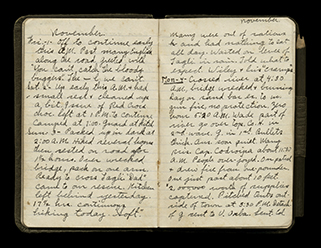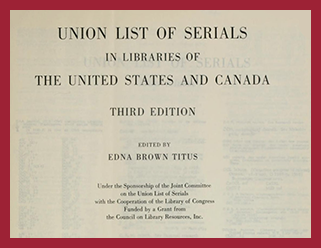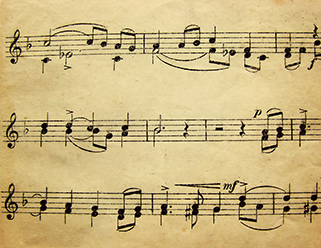In January 2020, CLIR launched a weekly series, “Year of CLIR,” highlighting key activity from each year since its founding in 1956. As CLIR celebrates its 65th anniversary, we are grateful to the many people, funders, and other organizations—several acknowledged in these posts—that have made our work possible.
 April 1, 2021: In 2020, CLIR responds to the global pandemic. In partnership with funders and host institutions, it extends grant and fellowship periods and offers supplemental emergency funds to grantees. It invites contributions to a blog series documenting institutional and personal responses to the pandemic. And it holds the first-ever virtual DLF Forum and affiliated events, drawing some 2,200 participants, including attendees from all 50 states and 36 countries. Reflecting on the year, CLIR president Charles Henry notes, “While no organization can claim to plot a predictive course in this era of uncertainty … we will continue to adapt, adjust, pivot when necessary, and anneal on behalf of our global community, to arrive together, strengthened and wiser, in what will inevitably be a new place.”
April 1, 2021: In 2020, CLIR responds to the global pandemic. In partnership with funders and host institutions, it extends grant and fellowship periods and offers supplemental emergency funds to grantees. It invites contributions to a blog series documenting institutional and personal responses to the pandemic. And it holds the first-ever virtual DLF Forum and affiliated events, drawing some 2,200 participants, including attendees from all 50 states and 36 countries. Reflecting on the year, CLIR president Charles Henry notes, “While no organization can claim to plot a predictive course in this era of uncertainty … we will continue to adapt, adjust, pivot when necessary, and anneal on behalf of our global community, to arrive together, strengthened and wiser, in what will inevitably be a new place.”
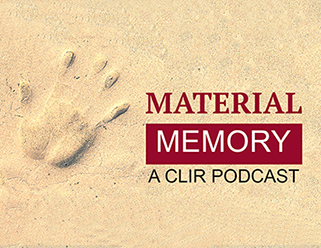 March 25, 2021: In 2019, CLIR launches its podcast, Material Memory. The show explores how our changing world affects our ability to access the record of our shared humanity, and the critical role that libraries, archives, museums and other public institutions play in keeping cultural memory alive. Episode Zero, featuring an interview with CLIR president Charles Henry, introduces the show. Season One celebrates the UN-designated Year of Indigenous Languages. In each of six episodes, host Joy Banks speaks with people involved in the work of restoring audio and audiovisual recordings of indigenous languages and their efforts to make these recordings available to the communities they represent. Season Two, “Cultural Memory and the Climate Crisis,” hosted by Nicole Ferraiolo, launches the following year. In eight episodes, the season explores the impact of the climate crisis on communities and their cultural heritage.
March 25, 2021: In 2019, CLIR launches its podcast, Material Memory. The show explores how our changing world affects our ability to access the record of our shared humanity, and the critical role that libraries, archives, museums and other public institutions play in keeping cultural memory alive. Episode Zero, featuring an interview with CLIR president Charles Henry, introduces the show. Season One celebrates the UN-designated Year of Indigenous Languages. In each of six episodes, host Joy Banks speaks with people involved in the work of restoring audio and audiovisual recordings of indigenous languages and their efforts to make these recordings available to the communities they represent. Season Two, “Cultural Memory and the Climate Crisis,” hosted by Nicole Ferraiolo, launches the following year. In eight episodes, the season explores the impact of the climate crisis on communities and their cultural heritage.
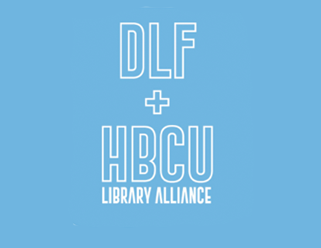 March 18, 2021: In 2018, CLIR’s Digital Library Federation (DLF) program partners with the HBCU Library Alliance to launch the three-year Authenticity Project with funding from the Institute of Museum and Library Services (IMLS). The project provides mentoring, learning, and leadership opportunities for 45 early- to mid-career librarians from historically black colleges and universities (HBCUs), as well as frameworks for conversation and collaboration among dozens of additional participants from DLF and HBCU member institutions. Fifteen fellows are selected for 2019. Because of the COVID-19 pandemic, the program takes a hiatus in 2020, but resumes in 2021 with support from faculty with expertise in online mentoring and community building.
March 18, 2021: In 2018, CLIR’s Digital Library Federation (DLF) program partners with the HBCU Library Alliance to launch the three-year Authenticity Project with funding from the Institute of Museum and Library Services (IMLS). The project provides mentoring, learning, and leadership opportunities for 45 early- to mid-career librarians from historically black colleges and universities (HBCUs), as well as frameworks for conversation and collaboration among dozens of additional participants from DLF and HBCU member institutions. Fifteen fellows are selected for 2019. Because of the COVID-19 pandemic, the program takes a hiatus in 2020, but resumes in 2021 with support from faculty with expertise in online mentoring and community building.
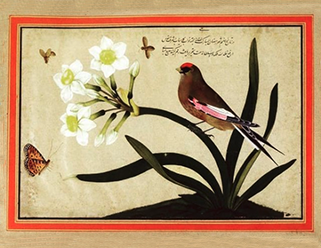 March 11, 2021: In spring 2017, CLIR receives funds from The Whiting Foundation to design, implement, and launch a proof of concept for a Digital Library of the Middle East (DLME), envisioned as an interoperable, large-scale digital library of cultural artifacts from the Middle East and North Africa. In collaboration with founding partners The Antiquities Coalition and Stanford Libraries, work begins to develop the platform, building on research conducted the previous year with a planning grant from The Andrew W. Mellon Foundation. In late summer 2017, Qatar National Library (QNL) joins the DLME as a founding member. Today, the DLME platform provides access to digital representations and data for nearly 134,000 items held in collections around the world, with new items added every month. An Instagram account regularly highlights selected content. Illustration of Flower and Nightingale from the Shahre Farang collection.
March 11, 2021: In spring 2017, CLIR receives funds from The Whiting Foundation to design, implement, and launch a proof of concept for a Digital Library of the Middle East (DLME), envisioned as an interoperable, large-scale digital library of cultural artifacts from the Middle East and North Africa. In collaboration with founding partners The Antiquities Coalition and Stanford Libraries, work begins to develop the platform, building on research conducted the previous year with a planning grant from The Andrew W. Mellon Foundation. In late summer 2017, Qatar National Library (QNL) joins the DLME as a founding member. Today, the DLME platform provides access to digital representations and data for nearly 134,000 items held in collections around the world, with new items added every month. An Instagram account regularly highlights selected content. Illustration of Flower and Nightingale from the Shahre Farang collection.
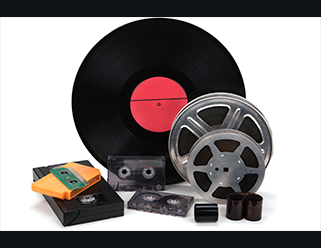 March 4, 2021: In 2016, CLIR launches the national grant competition, Recordings at Risk, to support the preservation of rare and unique audio, audiovisual, and other time-based media of high scholarly value through digital reformatting. Funded by The Andrew W. Mellon Foundation, the program has awarded seven rounds of funding since 2017, with announcement of new awards forthcoming in spring 2021. CLIR will open a ninth round of awards in 2021, after which the program will have awarded a total of $4.5 million.
March 4, 2021: In 2016, CLIR launches the national grant competition, Recordings at Risk, to support the preservation of rare and unique audio, audiovisual, and other time-based media of high scholarly value through digital reformatting. Funded by The Andrew W. Mellon Foundation, the program has awarded seven rounds of funding since 2017, with announcement of new awards forthcoming in spring 2021. CLIR will open a ninth round of awards in 2021, after which the program will have awarded a total of $4.5 million.
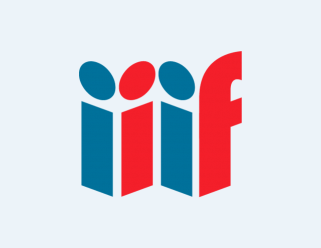 February 25, 2021: In July 2015, CLIR agrees to serve as administrative and staff home for the International Image Interoperability Framework Consortium (IIIF-C), which had been formed the previous month to provide steering and sustainability for the IIIF community. Created to standardize and improve sharing and display of image-based scholarly resources on the web, IIIF is driven by a community of research, national, and state libraries, museums, companies, and image repositories committed to providing access to high-quality image and audio/visual resources. Initial founding members of the consortium are the British Library, Oxford University, Stanford University, Bayerisches Staatsbibliothek (Bavarian State Library), Bibliothèque nationale de France (National Library of France), Cornell University, Nasjonalbibliotek (National Library of Norway), Princeton University, Wellcome Trust, and Yale University. Today, the consortium has 57 full and associate members across the globe and continues to grow.
February 25, 2021: In July 2015, CLIR agrees to serve as administrative and staff home for the International Image Interoperability Framework Consortium (IIIF-C), which had been formed the previous month to provide steering and sustainability for the IIIF community. Created to standardize and improve sharing and display of image-based scholarly resources on the web, IIIF is driven by a community of research, national, and state libraries, museums, companies, and image repositories committed to providing access to high-quality image and audio/visual resources. Initial founding members of the consortium are the British Library, Oxford University, Stanford University, Bayerisches Staatsbibliothek (Bavarian State Library), Bibliothèque nationale de France (National Library of France), Cornell University, Nasjonalbibliotek (National Library of Norway), Princeton University, Wellcome Trust, and Yale University. Today, the consortium has 57 full and associate members across the globe and continues to grow.
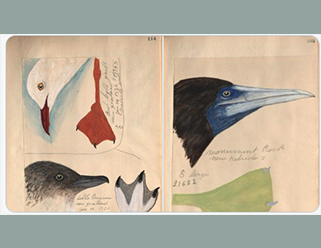 February 18, 2021: In 2014, CLIR announces a new program to fund the digitization of rare and unique content in cultural memory institutions. Funded by The Andrew W. Mellon Foundation, the new program is built on the model of CLIR’s Cataloging Hidden Special Collections and Archives program, launched in 2008, which awards its final grants in 2014. The new program awards $4 million annually through 2020, funding some 85 projects. In 2021, new program funding from Mellon supports a shift in thematic focus to collections of historically marginalized people and opens eligibility to Canadian nonprofit institutions. Field note image courtesy of Biodiversity Heritage Library, archives of Virginia and José Correia.
February 18, 2021: In 2014, CLIR announces a new program to fund the digitization of rare and unique content in cultural memory institutions. Funded by The Andrew W. Mellon Foundation, the new program is built on the model of CLIR’s Cataloging Hidden Special Collections and Archives program, launched in 2008, which awards its final grants in 2014. The new program awards $4 million annually through 2020, funding some 85 projects. In 2021, new program funding from Mellon supports a shift in thematic focus to collections of historically marginalized people and opens eligibility to Canadian nonprofit institutions. Field note image courtesy of Biodiversity Heritage Library, archives of Virginia and José Correia.
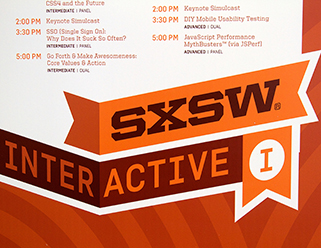 February 11, 2021: In 2013, CLIR’s Digital Library Federation (DLF) program sponsors a panel at South by Southwest Interactive (SXSWi), “Culture Hack: Libraries & Museums Open for Making,” which addresses publishing collection data as an open resource to be reused by others. DLF also supports live streaming and recording of discussions from the #ideadrop House, a place for librarians to gather for salon-style group discussions about the future of libraries and academic librarianship.
February 11, 2021: In 2013, CLIR’s Digital Library Federation (DLF) program sponsors a panel at South by Southwest Interactive (SXSWi), “Culture Hack: Libraries & Museums Open for Making,” which addresses publishing collection data as an open resource to be reused by others. DLF also supports live streaming and recording of discussions from the #ideadrop House, a place for librarians to gather for salon-style group discussions about the future of libraries and academic librarianship.
 February 4, 2021: In 2012, CLIR publishes One Culture. Computationally Intensive Research in the Humanities and Social Sciences, which reports on experiences of the first participants in the Digging Into Data Challenge. Initially sponsored by NEH, NSF, SSHRC, and Jisc (additional funders subsequently joined), the Digging into Data Challenge aims to address how “big data” changes the research landscape for the humanities and social sciences. The report culminates two years of work by CLIR staff involving interviews and site visits with scholars engaged in international research collaborations involving computational analysis of large data corpora. It introduces the eight projects awarded in Round One and discusses the importance of these cases as models for the future of research in the academy.
February 4, 2021: In 2012, CLIR publishes One Culture. Computationally Intensive Research in the Humanities and Social Sciences, which reports on experiences of the first participants in the Digging Into Data Challenge. Initially sponsored by NEH, NSF, SSHRC, and Jisc (additional funders subsequently joined), the Digging into Data Challenge aims to address how “big data” changes the research landscape for the humanities and social sciences. The report culminates two years of work by CLIR staff involving interviews and site visits with scholars engaged in international research collaborations involving computational analysis of large data corpora. It introduces the eight projects awarded in Round One and discusses the importance of these cases as models for the future of research in the academy.
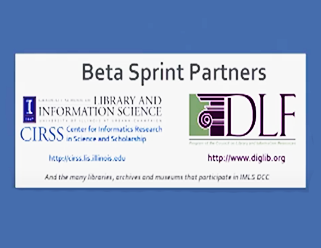 January 28, 2021: In October 2011, CLIR’s DLF program and the Center for Informatics Research in Science and Scholarship (CIRSS) at the Graduate School of Library and Information Science at the University of Illinois present their prototype for the Digital Public Library of America (DPLA) Beta Sprint. The project prototype leverages DLF Aquifer content along with IMLS Digital Collections and Content (IMLS DCC)—developed through a collaboration between CIRSS and the University of Illinois Library—as a core collection for the DPLA. The DPLA “Beta Sprint,” announced in May 2011, solicited models, prototypes, tools, and interfaces to demonstrate how the DPLA might index and provide access to a wide range of broadly distributed content. After more than two years of development, the DPLA is officially launched in April 2013. Today it provides access to more than 41.5 million images, texts, videos, and sounds from across the United States.
January 28, 2021: In October 2011, CLIR’s DLF program and the Center for Informatics Research in Science and Scholarship (CIRSS) at the Graduate School of Library and Information Science at the University of Illinois present their prototype for the Digital Public Library of America (DPLA) Beta Sprint. The project prototype leverages DLF Aquifer content along with IMLS Digital Collections and Content (IMLS DCC)—developed through a collaboration between CIRSS and the University of Illinois Library—as a core collection for the DPLA. The DPLA “Beta Sprint,” announced in May 2011, solicited models, prototypes, tools, and interfaces to demonstrate how the DPLA might index and provide access to a wide range of broadly distributed content. After more than two years of development, the DPLA is officially launched in April 2013. Today it provides access to more than 41.5 million images, texts, videos, and sounds from across the United States.
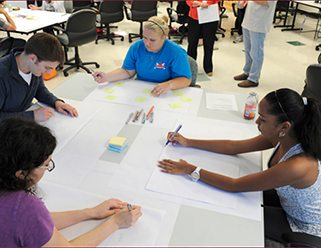 January 21, 2021: In 2010, CLIR launches a new series of workshops on participatory design in academic libraries led by anthropologist Nancy Fried Foster. The workshops are designed to provide participants with methods and tools for including faculty members, graduate students, undergraduates, and library staff in the process of designing new library space. The series builds on previous CLIR-sponsored workshops initiated in 2007 and led by Foster for teams of library and IT professionals. More than 250 people go through the workshops in participatory design and work-practice study methods, representing 95 colleges, universities, and cultural institutions. Reports of projects stemming from the workshops are presented in the 2012 publication, Participatory Design in Academic Libraries: Methods, Findings, and Implementations, and in the 2014 publication, Participatory Design in Academic Libraries: New Reports and Findings.
January 21, 2021: In 2010, CLIR launches a new series of workshops on participatory design in academic libraries led by anthropologist Nancy Fried Foster. The workshops are designed to provide participants with methods and tools for including faculty members, graduate students, undergraduates, and library staff in the process of designing new library space. The series builds on previous CLIR-sponsored workshops initiated in 2007 and led by Foster for teams of library and IT professionals. More than 250 people go through the workshops in participatory design and work-practice study methods, representing 95 colleges, universities, and cultural institutions. Reports of projects stemming from the workshops are presented in the 2012 publication, Participatory Design in Academic Libraries: Methods, Findings, and Implementations, and in the 2014 publication, Participatory Design in Academic Libraries: New Reports and Findings.
 January 14, 2021: In 2009, CLIR partners with the Council of Independent Colleges (CIC) on a three-year program, “Leadership through New Communities of Knowledge.” Funded by the Institute for Museum and Library Services and The Andrew W. Mellon Foundation, the program aims to develop the leadership capacity of librarians at many of the nation’s less affluent liberal arts colleges, in particular those that serve predominantly low-income, minority, and first-generation students. The program enables librarians to attend workshops and leadership institutes; funds the development of workshops addressing the special needs of small liberal arts colleges; and creates opportunities for librarians from less affluent institutions to partner with their peers at better-financed liberal arts colleges.
January 14, 2021: In 2009, CLIR partners with the Council of Independent Colleges (CIC) on a three-year program, “Leadership through New Communities of Knowledge.” Funded by the Institute for Museum and Library Services and The Andrew W. Mellon Foundation, the program aims to develop the leadership capacity of librarians at many of the nation’s less affluent liberal arts colleges, in particular those that serve predominantly low-income, minority, and first-generation students. The program enables librarians to attend workshops and leadership institutes; funds the development of workshops addressing the special needs of small liberal arts colleges; and creates opportunities for librarians from less affluent institutions to partner with their peers at better-financed liberal arts colleges.
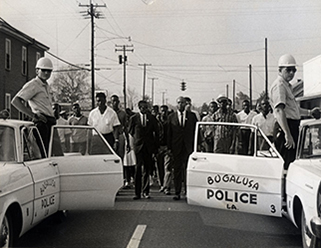 January 7, 2021: In 2008, CLIR announces the creation of a new national program to identify and catalog hidden special collections and archives, supported by a grant from The Andrew W. Mellon Foundation. Through a national competition, the program awards funds to institutions holding collections of high scholarly value that are difficult or impossible to locate through finding aids. The application period is opened in June, and 13 awards are announced in December. The program ends in 2014 after funding 126 projects and is succeeded by the Digitizing Hidden Special Collections and Archives Program, which continues today. Photo courtesy of Getty Research Institute.
January 7, 2021: In 2008, CLIR announces the creation of a new national program to identify and catalog hidden special collections and archives, supported by a grant from The Andrew W. Mellon Foundation. Through a national competition, the program awards funds to institutions holding collections of high scholarly value that are difficult or impossible to locate through finding aids. The application period is opened in June, and 13 awards are announced in December. The program ends in 2014 after funding 126 projects and is succeeded by the Digitizing Hidden Special Collections and Archives Program, which continues today. Photo courtesy of Getty Research Institute.
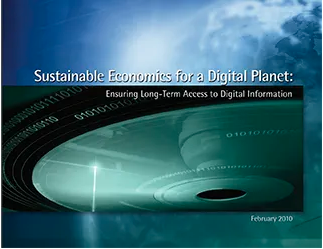 December 31, 2020: In 2007, CLIR joins the Joint Information Systems Committee of the United Kingdom, Library of Congress, and National Archives and Records Administration as an institutional participant in a Blue Ribbon Task Force on Sustainable Digital Preservation and Access. Funded by the National Science Foundation and The Andrew W. Mellon Foundation, the task force is charged with developing recommendations for promoting the economic sustainability of digital information for the academic, public, and private sectors. The group’s final report, Sustainable Economics for a Digital Planet: Ensuring Long-Term Access to Digital Information, is published in 2010.
December 31, 2020: In 2007, CLIR joins the Joint Information Systems Committee of the United Kingdom, Library of Congress, and National Archives and Records Administration as an institutional participant in a Blue Ribbon Task Force on Sustainable Digital Preservation and Access. Funded by the National Science Foundation and The Andrew W. Mellon Foundation, the task force is charged with developing recommendations for promoting the economic sustainability of digital information for the academic, public, and private sectors. The group’s final report, Sustainable Economics for a Digital Planet: Ensuring Long-Term Access to Digital Information, is published in 2010.
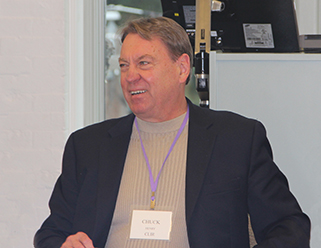 December 24, 2020: In 2006, at its fall meeting, CLIR’s Board names Charles Henry CLIR president. Henry, who was then serving as vice provost and university librarian at Rice University, had been appointed to the CLIR Board the previous year. In an essay published in early 2007, Henry outlines his vision for CLIR’s role in helping to build a new research and information environment. He identifies six interrelated topics: cyberinfrastructure, preservation, the next scholar, the emerging library, leadership, and new models, that continue to characterize CLIR’s key areas of activity under his leadership.
December 24, 2020: In 2006, at its fall meeting, CLIR’s Board names Charles Henry CLIR president. Henry, who was then serving as vice provost and university librarian at Rice University, had been appointed to the CLIR Board the previous year. In an essay published in early 2007, Henry outlines his vision for CLIR’s role in helping to build a new research and information environment. He identifies six interrelated topics: cyberinfrastructure, preservation, the next scholar, the emerging library, leadership, and new models, that continue to characterize CLIR’s key areas of activity under his leadership.
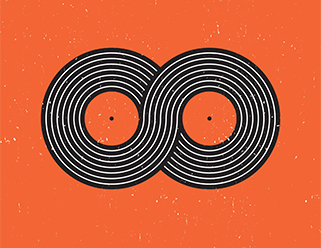 December 17, 2020: In 2005, CLIR published two reports addressing laws, policies, and issues relating to recorded sound, an especially challenging class of holdings for libraries and archives in terms of preservation and access. Survey of Reissues of US Recordings, by Tim Brooks, and Copyright Issues Relevant to Digital Preservation and Dissemination of Pre-1972 Commercial Sound Recordings by Libraries and Archives, by June Besek, were issued as part of a broader congressionally supported partnership with the Library of Congress forged in 2001, and which grew to focus on recorded sound heritage. By 2012, CLIR had published eight reports on behalf of the National Digital Information Infrastructure and Preservation Program (NDIIPP) and the National Recording Preservation Board, culminating in The Library of Congress National Recording Preservation Plan.
December 17, 2020: In 2005, CLIR published two reports addressing laws, policies, and issues relating to recorded sound, an especially challenging class of holdings for libraries and archives in terms of preservation and access. Survey of Reissues of US Recordings, by Tim Brooks, and Copyright Issues Relevant to Digital Preservation and Dissemination of Pre-1972 Commercial Sound Recordings by Libraries and Archives, by June Besek, were issued as part of a broader congressionally supported partnership with the Library of Congress forged in 2001, and which grew to focus on recorded sound heritage. By 2012, CLIR had published eight reports on behalf of the National Digital Information Infrastructure and Preservation Program (NDIIPP) and the National Recording Preservation Board, culminating in The Library of Congress National Recording Preservation Plan.
 December 10, 2020: In 2004, the British Library becomes the first institution outside the United States to join the Digital Library Federation, a program of CLIR. Today, DLF has ten international members located in Canada, Egypt, Qatar, and the United Kingdom. Two of its 10 advisory committee members represent institutions outside the United States. Read more.
December 10, 2020: In 2004, the British Library becomes the first institution outside the United States to join the Digital Library Federation, a program of CLIR. Today, DLF has ten international members located in Canada, Egypt, Qatar, and the United Kingdom. Two of its 10 advisory committee members represent institutions outside the United States. Read more.
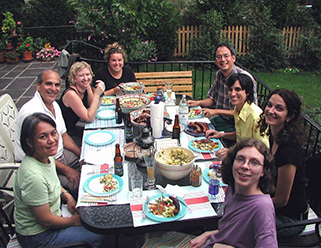 December 3, 2020: In 2003, CLIR invites applications for a new program offering postdoctoral fellowships for humanists in libraries. The goal is to give recent PhD graduates the chance to develop research tools, resources, and services while exploring new career opportunities. In spring 2004, the first cohort of 11 fellows is announced; among them is Christa Williford, who eventually joins the CLIR staff and is today senior director of research and assessment. As of 2020, the Postdoctoral Fellowship Program has supported 215 fellows at 93 host institutions. About half of former fellows are employed in libraries and half in adjunct or tenure-track positions. 2013 fellow and CLIR program officer Jodi Reeves Eyre currently manages the program. Photo, clockwise from lower left: fellow Patricia Hswe; summer seminar leader Elliott Shore; fellows Daphne Rentfrow, Meg Norcia, Ben Huang, Dawn Schmitz, Amanda French, and Amanda Watson.
December 3, 2020: In 2003, CLIR invites applications for a new program offering postdoctoral fellowships for humanists in libraries. The goal is to give recent PhD graduates the chance to develop research tools, resources, and services while exploring new career opportunities. In spring 2004, the first cohort of 11 fellows is announced; among them is Christa Williford, who eventually joins the CLIR staff and is today senior director of research and assessment. As of 2020, the Postdoctoral Fellowship Program has supported 215 fellows at 93 host institutions. About half of former fellows are employed in libraries and half in adjunct or tenure-track positions. 2013 fellow and CLIR program officer Jodi Reeves Eyre currently manages the program. Photo, clockwise from lower left: fellow Patricia Hswe; summer seminar leader Elliott Shore; fellows Daphne Rentfrow, Meg Norcia, Ben Huang, Dawn Schmitz, Amanda French, and Amanda Watson.
 November 19, 2020: In 2002, CLIR begins to administer the annual Bill & Melinda Gates Foundation’s International Access to Learning Award, which grants up to $1 million to a library or comparable organization outside the U.S. that has been innovative in providing free public access to information. The 2002 recipient, Colombia’s BibloRed, is announced at the IFLA meeting in Glasgow. CLIR administers the annual competition through 2006, after which the Gates Foundation continues to make awards through 2014.
November 19, 2020: In 2002, CLIR begins to administer the annual Bill & Melinda Gates Foundation’s International Access to Learning Award, which grants up to $1 million to a library or comparable organization outside the U.S. that has been innovative in providing free public access to information. The 2002 recipient, Colombia’s BibloRed, is announced at the IFLA meeting in Glasgow. CLIR administers the annual competition through 2006, after which the Gates Foundation continues to make awards through 2014.
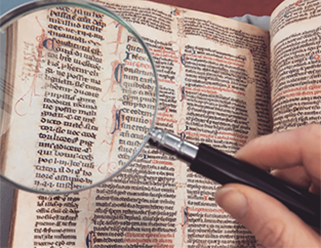 November 12, 2020: In 2001, with funding from The Andrew W. Mellon Foundation, CLIR announced formation of a new fellowship program to support dissertation research in original sources. The first cohort of 11 Mellon Dissertation Fellows was named in 2002. To date, the program has supported 258 fellows who have carried out work at more than 1,775 sites in 86 countries.
November 12, 2020: In 2001, with funding from The Andrew W. Mellon Foundation, CLIR announced formation of a new fellowship program to support dissertation research in original sources. The first cohort of 11 Mellon Dissertation Fellows was named in 2002. To date, the program has supported 258 fellows who have carried out work at more than 1,775 sites in 86 countries.
Today’s post has been chosen in recognition of World Digital Preservation Day.
In 2000, CLIR publishes Authenticity in a Digital Environment, a collection of papers addressing the question, “What is an authentic digital object”? Five authors—Charles T. Cullen, Peter B. Hirtle, David Levy, Clifford A. Lynch, and Jeff Rothenberg—contribute position papers that identify the attributes that define authentic digital data over time. Additional discussion is provided by Abby Smith.
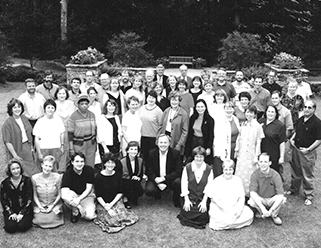 October 29, 2020: In 1999, CLIR solicits applications for the first Frye Leadership Institute, created “to effect fundamental change in the way universities manage their information resources in the digital era.” Named for Billy E. Frye—former chair of the Commission on Preservation and Access—and cosponsored with Emory University and EDUCAUSE, the first institute is held June 4-16, 2000, with Deanna Marcum and Richard Detweiler as co-deans and a class of 43 participants. The Frye Institute continues until 2012, and is reconstituted the following year as the Leading Change Institute. Since 2000, 790 people have participated in Frye and LCI. Pictured left, class of 2000.
October 29, 2020: In 1999, CLIR solicits applications for the first Frye Leadership Institute, created “to effect fundamental change in the way universities manage their information resources in the digital era.” Named for Billy E. Frye—former chair of the Commission on Preservation and Access—and cosponsored with Emory University and EDUCAUSE, the first institute is held June 4-16, 2000, with Deanna Marcum and Richard Detweiler as co-deans and a class of 43 participants. The Frye Institute continues until 2012, and is reconstituted the following year as the Leading Change Institute. Since 2000, 790 people have participated in Frye and LCI. Pictured left, class of 2000.
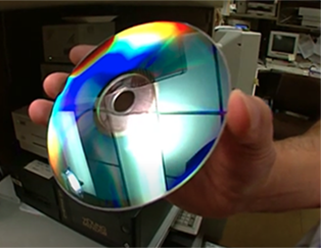 October 22, 2020: In 1998, PBS stations nationwide broadcast Into the Future, a documentary by Terry Sanders exploring the issues behind the survival of digitally stored information into the future. A sequel to Slow Fires (see entry for 1987, below), the film was produced in association with CLIR and the American Council on Learned Societies. The program features insights from Peter Norton, founder of Norton Utilities; Tim Berners-Lee, inventor of the World Wide Web; John Seely Brown, chief scientist at Xerox Corporation; Michael Dertouzos, director of M.I.T. Laboratory for Computer Science; Deanna Marcum, president of the Council on Library and Information Resources; and Jeff Rothenberg, senior computer scientist for RAND Corporation. Funding for the film was provided by the Alfred P. Sloan Foundation, the National Endowment for the Humanities, and Xerox Corporation. Watch the trailer.
October 22, 2020: In 1998, PBS stations nationwide broadcast Into the Future, a documentary by Terry Sanders exploring the issues behind the survival of digitally stored information into the future. A sequel to Slow Fires (see entry for 1987, below), the film was produced in association with CLIR and the American Council on Learned Societies. The program features insights from Peter Norton, founder of Norton Utilities; Tim Berners-Lee, inventor of the World Wide Web; John Seely Brown, chief scientist at Xerox Corporation; Michael Dertouzos, director of M.I.T. Laboratory for Computer Science; Deanna Marcum, president of the Council on Library and Information Resources; and Jeff Rothenberg, senior computer scientist for RAND Corporation. Funding for the film was provided by the Alfred P. Sloan Foundation, the National Endowment for the Humanities, and Xerox Corporation. Watch the trailer.
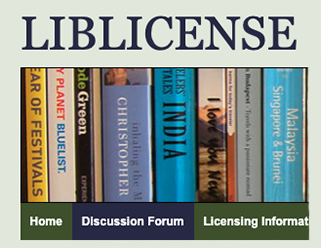 October 15, 2020: In 1997, CLIR’s first year as a merged organization, it awards $23,000 to Yale University Library to develop LIBLICENSE software for drafting licensing agreements for academic research libraries. The project, initiated and overseen by Ann Shumelda Okerson—then Yale’s associate university librarian—resulted in the release of a model license in 2001; an updated version was released in 2014 and is hosted by the Center for Research Libraries.
October 15, 2020: In 1997, CLIR’s first year as a merged organization, it awards $23,000 to Yale University Library to develop LIBLICENSE software for drafting licensing agreements for academic research libraries. The project, initiated and overseen by Ann Shumelda Okerson—then Yale’s associate university librarian—resulted in the release of a model license in 2001; an updated version was released in 2014 and is hosted by the Center for Research Libraries.
 October 8, 2020: Inspring 1996, the boards of the Commission on Preservation and Access and the Council on Library Resources, at their respective meetings, vote to merge the organizations into a single entity, and the conjoint board holds its first meeting in October. “We believe that each organization’s mission is strengthened by the merger, and we have reduced operating costs, in the process,” writes president Deanna Marcum, in the first joint annual report. “Just as libraries, archives, and educational institutions are restructuring to become more efficient and effective, so will we.” The formal merger is completed the following spring. Read the annual report.
October 8, 2020: Inspring 1996, the boards of the Commission on Preservation and Access and the Council on Library Resources, at their respective meetings, vote to merge the organizations into a single entity, and the conjoint board holds its first meeting in October. “We believe that each organization’s mission is strengthened by the merger, and we have reduced operating costs, in the process,” writes president Deanna Marcum, in the first joint annual report. “Just as libraries, archives, and educational institutions are restructuring to become more efficient and effective, so will we.” The formal merger is completed the following spring. Read the annual report.
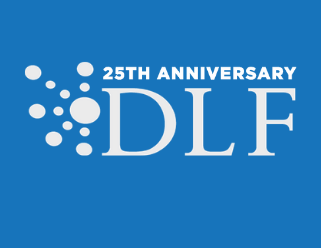 October 1, 2020: On May 1, 1995, the National Digital Library Federation, composed of 15 of the nation’s largest libraries and archives plus the Commission on Preservation and Access, is formally established. (The name is officially changed to the Digital Library Federation in Sept. 1997.) The Federation’s founding members, collectively responsible for hundreds of millions of cultural, scholarly, and historical resources, agree to cooperate on defining what must be done to bring together from across the nation and beyond digitized materials that will be made accessible to students, scholars, and citizens everywhere. Today the DLF, with more than 170 member institutions across the globe, continues its work as a community of practitioners who advance research, learning, social justice, and the public good through the creative design and wise application of digital library technologies. Read the announcement and list of signatories.
October 1, 2020: On May 1, 1995, the National Digital Library Federation, composed of 15 of the nation’s largest libraries and archives plus the Commission on Preservation and Access, is formally established. (The name is officially changed to the Digital Library Federation in Sept. 1997.) The Federation’s founding members, collectively responsible for hundreds of millions of cultural, scholarly, and historical resources, agree to cooperate on defining what must be done to bring together from across the nation and beyond digitized materials that will be made accessible to students, scholars, and citizens everywhere. Today the DLF, with more than 170 member institutions across the globe, continues its work as a community of practitioners who advance research, learning, social justice, and the public good through the creative design and wise application of digital library technologies. Read the announcement and list of signatories.
 September 24, 2020: In December 1994, the Commission on Preservation and Access and the Research Libraries Group create the Task Force on Archiving of Digital Information to investigate the means of ensuring “continued access indefinitely into the future of records stored in digital electronic form.” Chaired by John Garrett of CyberVillages Corporation and Donald Waters of Yale University, the task force publishes Preserving Digital Information in May 1996. The report underscores the need to protect digital information from both media deterioration and technological obsolescence, and highlights the crucial role of creators in helping ensure access to the digital resources they produce. It receives the Society of American Archivists’ Preservation Publication Award in 1997.
September 24, 2020: In December 1994, the Commission on Preservation and Access and the Research Libraries Group create the Task Force on Archiving of Digital Information to investigate the means of ensuring “continued access indefinitely into the future of records stored in digital electronic form.” Chaired by John Garrett of CyberVillages Corporation and Donald Waters of Yale University, the task force publishes Preserving Digital Information in May 1996. The report underscores the need to protect digital information from both media deterioration and technological obsolescence, and highlights the crucial role of creators in helping ensure access to the digital resources they produce. It receives the Society of American Archivists’ Preservation Publication Award in 1997.
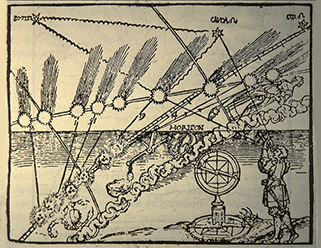 September 17, 2020: In 1993, CLR awards $65,000 to Rice University’s Electronic Studio to develop the Galileo Project, a hypertext, multimedia educational resource to be used in a course on the history of science in early modern Europe. In an overview of the project, technical lead Adam Thornton describes it as “a trial balloon for the use of computing in the humanities.” Included in the Galileo Project are a comprehensive hypertextual bibliography, a collection of maps, a general timeline of European history from 1500 to 1700, and the animation of Galileo’s observations and experiments. Several members of the academic community, including a librarian, a senior faculty member in the history department, some computing professionals, and a team of student programmers, designed and developed the resource, which was first used in the spring of 1995. Image from Galileo site: Comet of 1532 observed by Apian.
September 17, 2020: In 1993, CLR awards $65,000 to Rice University’s Electronic Studio to develop the Galileo Project, a hypertext, multimedia educational resource to be used in a course on the history of science in early modern Europe. In an overview of the project, technical lead Adam Thornton describes it as “a trial balloon for the use of computing in the humanities.” Included in the Galileo Project are a comprehensive hypertextual bibliography, a collection of maps, a general timeline of European history from 1500 to 1700, and the animation of Galileo’s observations and experiments. Several members of the academic community, including a librarian, a senior faculty member in the history department, some computing professionals, and a team of student programmers, designed and developed the resource, which was first used in the spring of 1995. Image from Galileo site: Comet of 1532 observed by Apian.
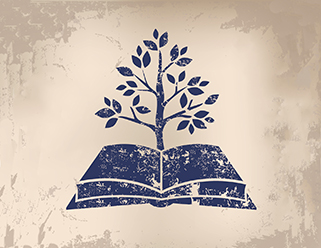 September 10, 2020: In May 1992, the US was emerging from a recession and Los Angeles had erupted in riots after the acquittal of four LA police officers in the savage beating of Rodney King. In opening CLR’s 36th annual report, Chairman Maximilian W. Kempner noted that foundations that had traditionally supported library programs were shifting their focus to the “broader societal issues of poverty, urban decay, racial discrimination, failing educational systems, and deteriorating infrastructure, as well as international challenges.” He continued, “For the library of today to be part of the solution rather than just another institution in need, we must support programs that demonstrate the relevance of libraries to the problems of today and tomorrow. It is not enough to cast libraries in the role of preservers of knowledge. Libraries, and particularly librarians, must be active agents in the problem-solving process and promote the idea that the knowledge they preserve is useful in that process.” Read more, p. 11.
September 10, 2020: In May 1992, the US was emerging from a recession and Los Angeles had erupted in riots after the acquittal of four LA police officers in the savage beating of Rodney King. In opening CLR’s 36th annual report, Chairman Maximilian W. Kempner noted that foundations that had traditionally supported library programs were shifting their focus to the “broader societal issues of poverty, urban decay, racial discrimination, failing educational systems, and deteriorating infrastructure, as well as international challenges.” He continued, “For the library of today to be part of the solution rather than just another institution in need, we must support programs that demonstrate the relevance of libraries to the problems of today and tomorrow. It is not enough to cast libraries in the role of preservers of knowledge. Libraries, and particularly librarians, must be active agents in the problem-solving process and promote the idea that the knowledge they preserve is useful in that process.” Read more, p. 11.
 September 3, 2020: In 1991, retiring CLR president Warren J. Haas reflects on conclusions from CLR’s Advisory Committee on Professional Education, formed the previous year to explore the problems of and prospects for the professional education of librarians in research universities. The committee’s work arose from concerns that the promise of the information age was “taking shape too slowly and unevenly … in part, a sign of frustration with librarians or, more accurately, frustration with librarianship.” Haas comments on the committee’s eight findings, which range from improving the quality of teaching to shaping a more modern definition of librarianship itself. Read the overview.
September 3, 2020: In 1991, retiring CLR president Warren J. Haas reflects on conclusions from CLR’s Advisory Committee on Professional Education, formed the previous year to explore the problems of and prospects for the professional education of librarians in research universities. The committee’s work arose from concerns that the promise of the information age was “taking shape too slowly and unevenly … in part, a sign of frustration with librarians or, more accurately, frustration with librarianship.” Haas comments on the committee’s eight findings, which range from improving the quality of teaching to shaping a more modern definition of librarianship itself. Read the overview.
August 27, 2020: In 1990, CLR awards the American Library Association’s ACRL (Association of College and Research Libraries) Rare Books and Manuscripts Section $5,000 to support a revision of the 1987 Standards for Ethical Conduct for Rare Book, Manuscript, and Special Collections Librarians. The revision, approved by ACRL in 1993, was again updated in 2003 as the Code of Ethics for Special Collections Librarians, which remains currently in use.
 August 20, 2020: In 1989, CLR awards the University of Pittsburgh $60,676 to develop an institute for government archivists focused on archival administration of electronic records. The first of five key findings of Phase 1 notes that “The archival management of electronic records is probably the most important, and certainly the most complicated, issue currently before the archival profession.” Phase 2 of the institute provides intensive instruction for the chief administrative officials of state archival agencies on the characteristics of and projected future changes in modern information systems, and to introduce them to management tools needed for operating in that new environment. A report on the institute, Archival Administration in the Electronic Information Age: An Advanced Institute for Government Archivists, was published the following year.
August 20, 2020: In 1989, CLR awards the University of Pittsburgh $60,676 to develop an institute for government archivists focused on archival administration of electronic records. The first of five key findings of Phase 1 notes that “The archival management of electronic records is probably the most important, and certainly the most complicated, issue currently before the archival profession.” Phase 2 of the institute provides intensive instruction for the chief administrative officials of state archival agencies on the characteristics of and projected future changes in modern information systems, and to introduce them to management tools needed for operating in that new environment. A report on the institute, Archival Administration in the Electronic Information Age: An Advanced Institute for Government Archivists, was published the following year.
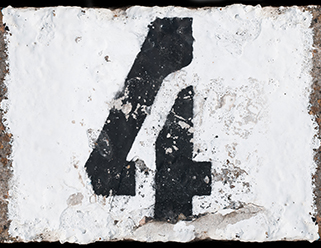 August 13, 2020: In 1988, CLR issues a strategic vision for “The Fourth Decade.” While continuing to focus on library operations and on professional development, the new program more explicitly reflects how “the new world of information … will affect teaching and learning at all levels and in all settings.” It notes, “The chain of intellectual communication, while increasingly compartmentalized by subject, is now less so in terms of process. The development of technology-based information services offers the prospect of improved access to many kinds of information for individuals outside the organized academic and research communities. Public libraries, especially, may have a much-expanded role to play.” Read more, pp. 10–19.
August 13, 2020: In 1988, CLR issues a strategic vision for “The Fourth Decade.” While continuing to focus on library operations and on professional development, the new program more explicitly reflects how “the new world of information … will affect teaching and learning at all levels and in all settings.” It notes, “The chain of intellectual communication, while increasingly compartmentalized by subject, is now less so in terms of process. The development of technology-based information services offers the prospect of improved access to many kinds of information for individuals outside the organized academic and research communities. Public libraries, especially, may have a much-expanded role to play.” Read more, pp. 10–19.
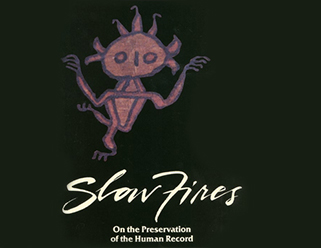 August 6, 2020: In 1987, the American Film Foundation releases the Terry Sanders film, Slow Fires: On the Preservation of the Human Record, with funding from CLR, The Andrew W. Mellon Foundation, and the National Endowment for the Humanities, and in partnership with the Library of Congress. The award-winning documentary, narrated by Robert MacNeil and featuring commentary by Barbara Tuchman and James Michener, tells the story of the deterioration and destruction of the world’s intellectual heritage through the “slow fires” caused by acid paper. The film was produced in English, Spanish, and French.
August 6, 2020: In 1987, the American Film Foundation releases the Terry Sanders film, Slow Fires: On the Preservation of the Human Record, with funding from CLR, The Andrew W. Mellon Foundation, and the National Endowment for the Humanities, and in partnership with the Library of Congress. The award-winning documentary, narrated by Robert MacNeil and featuring commentary by Barbara Tuchman and James Michener, tells the story of the deterioration and destruction of the world’s intellectual heritage through the “slow fires” caused by acid paper. The film was produced in English, Spanish, and French.
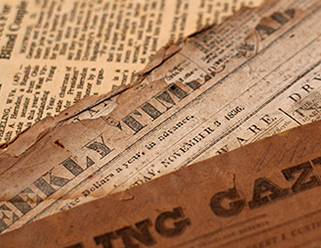 July 30, 2020: In spring 1986, following publication of the report Brittle Books, CLR’s Committee on Preservation and Access became the independent Commission on Preservation and Access, created to guide the national preservation effort in response to the acid paper problem. Funding for the Commission’s first three years was provided by CLR, the H.W. Wilson Foundation, eight universities (Columbia, Yale, Indiana, University of Illinois at Urbana-Champaign, University of Michigan, Princeton, Harvard, and Stanford), and participants in the New York State Preservation Program. Read more.
July 30, 2020: In spring 1986, following publication of the report Brittle Books, CLR’s Committee on Preservation and Access became the independent Commission on Preservation and Access, created to guide the national preservation effort in response to the acid paper problem. Funding for the Commission’s first three years was provided by CLR, the H.W. Wilson Foundation, eight universities (Columbia, Yale, Indiana, University of Illinois at Urbana-Champaign, University of Michigan, Princeton, Harvard, and Stanford), and participants in the New York State Preservation Program. Read more.
 July 23, 2020: In 1985, CLR announces an ambitious $4.7 million research program, with initial funding from the J. Paul Getty Trust, The Andrew W. Mellon Foundation, and the Pew Memorial Trust. The agenda, focused on information characteristics, users’ requirements, and the structure of information systems, is intended to bridge the gap between specialized basic research in information science and the development and applications work that had characterized past CLR programs. “There will be a new emphasis on building the background of facts and conducting the careful analysis required to shape future information services, and on creating the management capacities to provide those services, with special attention to the long-term interests of scholarship, universities, research, and society,” noted the 29th annual report. Read more, pp. 9-15.
July 23, 2020: In 1985, CLR announces an ambitious $4.7 million research program, with initial funding from the J. Paul Getty Trust, The Andrew W. Mellon Foundation, and the Pew Memorial Trust. The agenda, focused on information characteristics, users’ requirements, and the structure of information systems, is intended to bridge the gap between specialized basic research in information science and the development and applications work that had characterized past CLR programs. “There will be a new emphasis on building the background of facts and conducting the careful analysis required to shape future information services, and on creating the management capacities to provide those services, with special attention to the long-term interests of scholarship, universities, research, and society,” noted the 29th annual report. Read more, pp. 9-15.
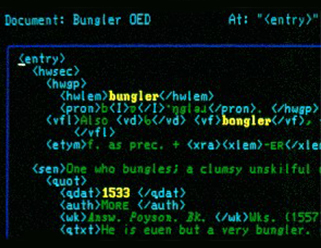 July 16, 2020: In 1984, CLR awards $50,000 to the Association of American Publishers (AAS) to develop a standard set of codes for identifying various portions of manuscripts in electronic form, building on past work by the Graphic Communications Association, American National Standards Institute, and the International Standards Organization (ISO). By June 1986, AAS had published a provisional standard, Basic Author’s Guide to Electronic Manuscript Preparation and Markup, and had presented its recommendations to NISO and ISO. In October 1986, ISO approved International Standard 8879, Information Processing—Text and Office Systems—Standard Generalized Markup Language (SGML), for broad use in conventional and electronic publishing. Photo by Mike Cowlishaw, CC BY-SA 3.0. Read more.
July 16, 2020: In 1984, CLR awards $50,000 to the Association of American Publishers (AAS) to develop a standard set of codes for identifying various portions of manuscripts in electronic form, building on past work by the Graphic Communications Association, American National Standards Institute, and the International Standards Organization (ISO). By June 1986, AAS had published a provisional standard, Basic Author’s Guide to Electronic Manuscript Preparation and Markup, and had presented its recommendations to NISO and ISO. In October 1986, ISO approved International Standard 8879, Information Processing—Text and Office Systems—Standard Generalized Markup Language (SGML), for broad use in conventional and electronic publishing. Photo by Mike Cowlishaw, CC BY-SA 3.0. Read more.
 July 9, 2020: In 1983, CLR awards $82,652 to the Library of Congress for work with the Research Libraries Group and Washington Library Network to create protocols for a standard network interconnection (SNI) that would permit linking large bibliographic databases. Protocol specifications were completed that year and participants were prepared for full SNI testing. OCLC ultimately joined the effort, and by June of 1986, the first application of the link, transferring authority records, was in the early stages of operation, and work on a second application, the transfer of bibliographic records, was under way. Read more.
July 9, 2020: In 1983, CLR awards $82,652 to the Library of Congress for work with the Research Libraries Group and Washington Library Network to create protocols for a standard network interconnection (SNI) that would permit linking large bibliographic databases. Protocol specifications were completed that year and participants were prepared for full SNI testing. OCLC ultimately joined the effort, and by June of 1986, the first application of the link, transferring authority records, was in the early stages of operation, and work on a second application, the transfer of bibliographic records, was under way. Read more.
 July 2, 2020: In 1982, CLR publishes Book Longevity. Reports of the Committee on Production Guidelines for Book Longevity, based in part on a survey of more than 430 publishing companies to gather information about their use of acid-free paper, awareness of the need for permanent paper, and willingness to identify acid-free publications on the copyright pages of their new books. The committee’s findings had a significant impact on raising awareness and on publishing industry practices. On March 7, 1989, New York Public Library hosted a “Commitment Day” ceremony honoring 46 prominent authors and 40 publishers who had signed the “Declaration of Book Preservation.” Most of the commercial printing papers produced today are acid free, alkaline, or permanent. Read more.
July 2, 2020: In 1982, CLR publishes Book Longevity. Reports of the Committee on Production Guidelines for Book Longevity, based in part on a survey of more than 430 publishing companies to gather information about their use of acid-free paper, awareness of the need for permanent paper, and willingness to identify acid-free publications on the copyright pages of their new books. The committee’s findings had a significant impact on raising awareness and on publishing industry practices. On March 7, 1989, New York Public Library hosted a “Commitment Day” ceremony honoring 46 prominent authors and 40 publishers who had signed the “Declaration of Book Preservation.” Most of the commercial printing papers produced today are acid free, alkaline, or permanent. Read more.
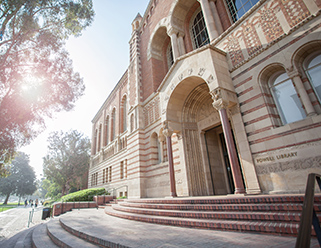 June 25, 2020: In 1981, CLR commits $742,000 to establish the Professional Education and Training for Research Librarianship (PETREL) Program. The program is prompted by a recognition that library science degree programs were not providing the kind of training needed for many research library positions. CLR awards funds to three library schools: the University of Chicago Graduate Library School, the Graduate School of Library and Information Science at UCLA, and the University of Michigan School of Library Science. CLR supports the program for three years. Two of the schools incorporate the special program into their regular curriculum. Read more.
June 25, 2020: In 1981, CLR commits $742,000 to establish the Professional Education and Training for Research Librarianship (PETREL) Program. The program is prompted by a recognition that library science degree programs were not providing the kind of training needed for many research library positions. CLR awards funds to three library schools: the University of Chicago Graduate Library School, the Graduate School of Library and Information Science at UCLA, and the University of Michigan School of Library Science. CLR supports the program for three years. Two of the schools incorporate the special program into their regular curriculum. Read more.
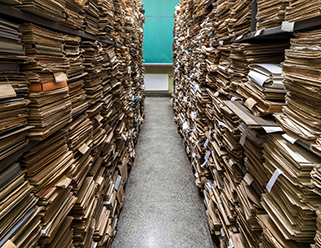 June 18, 2020: In 1980, with funds from the Exxon Education Foundation, CLR grants $30,000 to the International Council on Archives for projects related to worldwide preservation and use of archival sources with special attention to the Global South. The grant covers (1) preparation of a records management manual designed especially for use in then recently independent countries; (2) a symposium in Rio de Janeiro to address matters related to the responsibilities, professional environment, and status of archivists in Latin American countries; and (3) the preparation of three separate curricula, to be available in English, French, and Spanish, to aid in the education and training of subprofessional, archival personnel in developing regions. Read more.
June 18, 2020: In 1980, with funds from the Exxon Education Foundation, CLR grants $30,000 to the International Council on Archives for projects related to worldwide preservation and use of archival sources with special attention to the Global South. The grant covers (1) preparation of a records management manual designed especially for use in then recently independent countries; (2) a symposium in Rio de Janeiro to address matters related to the responsibilities, professional environment, and status of archivists in Latin American countries; and (3) the preparation of three separate curricula, to be available in English, French, and Spanish, to aid in the education and training of subprofessional, archival personnel in developing regions. Read more.
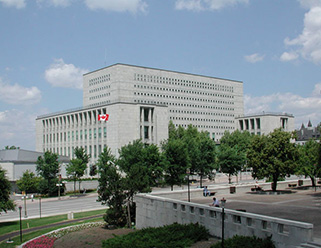 June 11, 2020: In 1979, CLR awards a grant of $23,000 to the National Library of Canada (now Library and Archives Canada) to enable it to publish, in computer output microfiche, bibliographic records produced in the CONSER (Conservation of Serials) project. CONSER was a cooperative file-building effort initiated in 1974 to develop a shared database of serials records. CLR funded and managed the project for several years, using the resources of 14 libraries in the United States and Canada, and the online computer facilities of OCLC, Inc. By 1979, OCLC had assumed the management role. Photo courtesy Library and Archives Canada. Read more.
June 11, 2020: In 1979, CLR awards a grant of $23,000 to the National Library of Canada (now Library and Archives Canada) to enable it to publish, in computer output microfiche, bibliographic records produced in the CONSER (Conservation of Serials) project. CONSER was a cooperative file-building effort initiated in 1974 to develop a shared database of serials records. CLR funded and managed the project for several years, using the resources of 14 libraries in the United States and Canada, and the online computer facilities of OCLC, Inc. By 1979, OCLC had assumed the management role. Photo courtesy Library and Archives Canada. Read more.
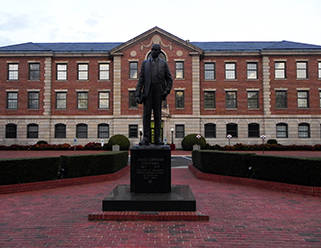 June 4, 2020: In 1978, CLR brings its decade-long College Library Program to a close. CLR had initiated the program to support libraries seeking to take a more active, meaningful role in undergraduate education. In partnership with the National Endowment for the Humanities, CLR established a fund, initially investing $250,000, from which matching grants could be made to individual colleges and universities for activities to provide cohesive links between library services and classroom instruction related to the humanities or areas of the social sciences that use humanistic methods. The program awarded grants to 35 college and university libraries in 25 states. North Carolina Central University (NCCU), pictured here, was among six HBCU recipients. (Statue of NCCU founder James E. Shepard; photo via Wikimedia RDUpedia CC-BY-SA-3.0.) Read more.
June 4, 2020: In 1978, CLR brings its decade-long College Library Program to a close. CLR had initiated the program to support libraries seeking to take a more active, meaningful role in undergraduate education. In partnership with the National Endowment for the Humanities, CLR established a fund, initially investing $250,000, from which matching grants could be made to individual colleges and universities for activities to provide cohesive links between library services and classroom instruction related to the humanities or areas of the social sciences that use humanistic methods. The program awarded grants to 35 college and university libraries in 25 states. North Carolina Central University (NCCU), pictured here, was among six HBCU recipients. (Statue of NCCU founder James E. Shepard; photo via Wikimedia RDUpedia CC-BY-SA-3.0.) Read more.
 May 28, 2020: In 1977, CLR concludes the second year of a three-year, $72,000 grant to the International Council of Archives (ICA), to strengthen its secretariat. During the three years of grant support, ICA revised its constitution and dues structure, extended its membership geographically, established regional branches and professional committees, and implemented a variety of projects and publications designed to assist archival development throughout the world. Read the 1977 annual report.
May 28, 2020: In 1977, CLR concludes the second year of a three-year, $72,000 grant to the International Council of Archives (ICA), to strengthen its secretariat. During the three years of grant support, ICA revised its constitution and dues structure, extended its membership geographically, established regional branches and professional committees, and implemented a variety of projects and publications designed to assist archival development throughout the world. Read the 1977 annual report.
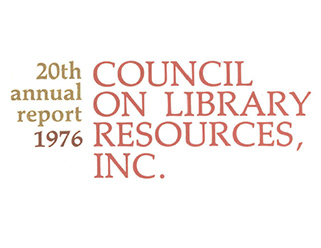 May 21, 2020: In 1976, CLR celebrates its 20th birthday. In his introduction to the 1975–76 annual report, CLR president Fred Cole writes, “The Council has long held the view that many of the needs of libraries and therefore of their users can best be served through the activities of a national library system composed of cooperating networks of various kinds and drawing upon centralized resources. … Because of its flexibility and relative independence as a private, operating foundation, the Council has often been in a position to coordinate some of these developments, to act as a mediator or catalyst when required, and to work toward ensuring that emerging systems will be compatible and contribute to an evolving national system.” Read the 1976 annual report.
May 21, 2020: In 1976, CLR celebrates its 20th birthday. In his introduction to the 1975–76 annual report, CLR president Fred Cole writes, “The Council has long held the view that many of the needs of libraries and therefore of their users can best be served through the activities of a national library system composed of cooperating networks of various kinds and drawing upon centralized resources. … Because of its flexibility and relative independence as a private, operating foundation, the Council has often been in a position to coordinate some of these developments, to act as a mediator or catalyst when required, and to work toward ensuring that emerging systems will be compatible and contribute to an evolving national system.” Read the 1976 annual report.
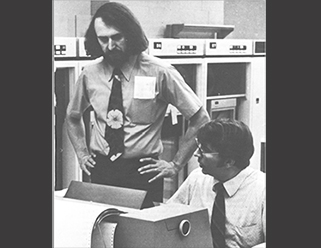 May 14, 2020: In 1975, CLR awards grants totaling more than $1.5 million for projects that would lead to the development of national library services, to produce “the most efficient and economical library services to users.” Among the 11 grants awarded that year were funds to develop the Western Interstate Bibliographic Network, revise the Anglo-American Cataloging Rules, support the ongoing work of ANSI Committee Z-19, and further develop Stanford’s BALLOTS (Bibliographic Automation of Large Library Operations Using a Time-Sharing System). Read more.
May 14, 2020: In 1975, CLR awards grants totaling more than $1.5 million for projects that would lead to the development of national library services, to produce “the most efficient and economical library services to users.” Among the 11 grants awarded that year were funds to develop the Western Interstate Bibliographic Network, revise the Anglo-American Cataloging Rules, support the ongoing work of ANSI Committee Z-19, and further develop Stanford’s BALLOTS (Bibliographic Automation of Large Library Operations Using a Time-Sharing System). Read more.
 May 7, 2020: In 1974, CLR launches the Academic Library Management Intern Program, which awards up to five internships annually to outstanding mid-career librarians, each of whom works closely with the director of an academic library of acknowledged administrative excellence. During their year, the interns have a unique opportunity to observe the techniques used by top management for dealing with day-to-day problems and to help find solutions to those problems. The interns take part in special projects that are helpful to their host institution and also increase their management skills. Over two decades, 55 librarians participate in the program. Read more.
May 7, 2020: In 1974, CLR launches the Academic Library Management Intern Program, which awards up to five internships annually to outstanding mid-career librarians, each of whom works closely with the director of an academic library of acknowledged administrative excellence. During their year, the interns have a unique opportunity to observe the techniques used by top management for dealing with day-to-day problems and to help find solutions to those problems. The interns take part in special projects that are helpful to their host institution and also increase their management skills. Over two decades, 55 librarians participate in the program. Read more.
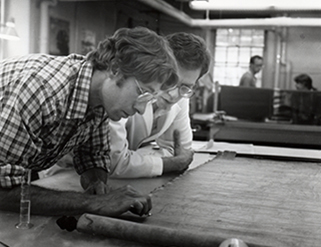 April 30, 2020: In 1973, CLR awards a two-year matching grant to the six-state New England Interstate Library Compact for establishment of the New England Document Conservation Center (NEDCC) in North Andover, Massachusetts. The center was initially a workshop where, on a fee basis, techniques of document preservation, repair, and restoration were applied to materials submitted for treatment by institutions in the six states. Services were eventually extended beyond New England, and the center was completely self-supporting at the end of the two-year grant period. (Pictured are paper conservators Bucky Weaver and photograph conservator Gary Albright; photo courtesy NEDCC.) Read more.
April 30, 2020: In 1973, CLR awards a two-year matching grant to the six-state New England Interstate Library Compact for establishment of the New England Document Conservation Center (NEDCC) in North Andover, Massachusetts. The center was initially a workshop where, on a fee basis, techniques of document preservation, repair, and restoration were applied to materials submitted for treatment by institutions in the six states. Services were eventually extended beyond New England, and the center was completely self-supporting at the end of the two-year grant period. (Pictured are paper conservators Bucky Weaver and photograph conservator Gary Albright; photo courtesy NEDCC.) Read more.
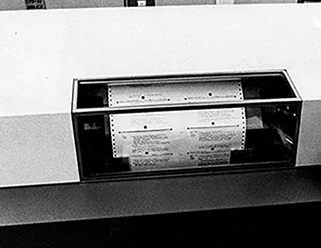 April 23, 2020: In 1972, CLR awards the Ohio College Library Center (OCLC) $75,000 to expand its cataloging operations. At the time, OCLC offered online cataloging service to some 50 member libraries in Ohio. Its success attracted wide interest, and other library groups sought its help in replicating the system elsewhere. OCLC was also developing plans to launch modules for serials control, technical processing, remote catalog access and circulation control, and bibliographic information and subject access retrieval. Read more.
April 23, 2020: In 1972, CLR awards the Ohio College Library Center (OCLC) $75,000 to expand its cataloging operations. At the time, OCLC offered online cataloging service to some 50 member libraries in Ohio. Its success attracted wide interest, and other library groups sought its help in replicating the system elsewhere. OCLC was also developing plans to launch modules for serials control, technical processing, remote catalog access and circulation control, and bibliographic information and subject access retrieval. Read more.
 April 16, 2020: In 1971, CLR President Fred Cole introduces CLR’s annual report with an essay that has special relevance to the present. By 1970, higher education was facing reductions in federal and state funding. Citing a study prepared for the Carnegie Commission on Higher Education and the Ford Foundation and published that year, The New Depression in Higher Education, a Study of Financial Conditions at 41 Colleges and Universities, Cole emphasizes the impact on libraries. He writes: “Through every available means we must work to produce a greater understanding of the significance of libraries in our society, particularly in every aspect of our educational systems. For today more than ever libraries are the bedrock of education, of cultural and scientific advancement. The library community knows this, of course. But do users? Do those upon whom libraries depend for support?” That year CLR awarded $1.4 million to support 32 new projects on behalf of research, academic, and public libraries. Read more.
April 16, 2020: In 1971, CLR President Fred Cole introduces CLR’s annual report with an essay that has special relevance to the present. By 1970, higher education was facing reductions in federal and state funding. Citing a study prepared for the Carnegie Commission on Higher Education and the Ford Foundation and published that year, The New Depression in Higher Education, a Study of Financial Conditions at 41 Colleges and Universities, Cole emphasizes the impact on libraries. He writes: “Through every available means we must work to produce a greater understanding of the significance of libraries in our society, particularly in every aspect of our educational systems. For today more than ever libraries are the bedrock of education, of cultural and scientific advancement. The library community knows this, of course. But do users? Do those upon whom libraries depend for support?” That year CLR awarded $1.4 million to support 32 new projects on behalf of research, academic, and public libraries. Read more.
Our entry for 1970 was published on Feb. 13; scroll down!
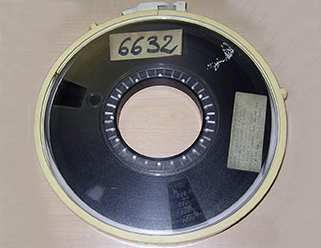 April 9, 2020: In 1969, CLR awards the Library of Congress $25,000 for a pilot project to convert retrospective cataloging records to machine-readable form. Over the previous years, CLR had supported the development of Project MARC (MAchine Readable Cataloging), which distributed standard cataloging information in machine-readable form. But the MARC program focused on current cataloging only, and there was an urgent need to convert earlier cataloging records to machine-readable form. (Photo of 9 track tape via Wikimedia Commons.) Read more.
April 9, 2020: In 1969, CLR awards the Library of Congress $25,000 for a pilot project to convert retrospective cataloging records to machine-readable form. Over the previous years, CLR had supported the development of Project MARC (MAchine Readable Cataloging), which distributed standard cataloging information in machine-readable form. But the MARC program focused on current cataloging only, and there was an urgent need to convert earlier cataloging records to machine-readable form. (Photo of 9 track tape via Wikimedia Commons.) Read more.
 April 2, 2020: In 1968, CLR awards the San Antonio Public Library System $22,500 to explore the feasibility of books by mail as a regular feature of public library service in San Antonio and Bexar County, Texas. The experiment was a success; by 1970, San Antonio Public had permanently installed books-by-mail as a service to the user, and books by mail accounted for some 17% of total loans.
April 2, 2020: In 1968, CLR awards the San Antonio Public Library System $22,500 to explore the feasibility of books by mail as a regular feature of public library service in San Antonio and Bexar County, Texas. The experiment was a success; by 1970, San Antonio Public had permanently installed books-by-mail as a service to the user, and books by mail accounted for some 17% of total loans.
Read more.
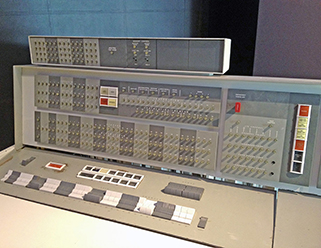 March 26, 2020: In 1967, CLR awards $250,000 to MIT to help support work on Project Intrex, which sought to develop and test a remote-access computer-based catalog, as well as the ability to research and retrieve information in graphic form electronically. (Photo of IBM 7094 operator’s console courtesy Arnold Reinhold via Wikimedia Commons.) Read more.
March 26, 2020: In 1967, CLR awards $250,000 to MIT to help support work on Project Intrex, which sought to develop and test a remote-access computer-based catalog, as well as the ability to research and retrieve information in graphic form electronically. (Photo of IBM 7094 operator’s console courtesy Arnold Reinhold via Wikimedia Commons.) Read more.
March 19, 2020: In 1966, with support from a $244,651 grant—CLR’s largest to date—the massive third edition of the Union List of Serials in Libraries and the United States and Canada was published. The last edition had been published in 1943. The guide was critical to providing information necessary for the cooperative use of serials through interlibrary loan. Read more.
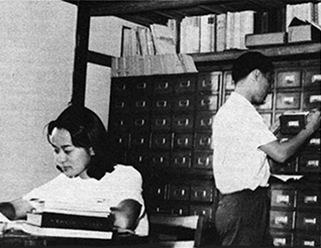 March 12, 2020: The boom in Far Eastern Studies after WWII led to greater demand for collections in this field, but many works were expensive, scarce, or out of print. To alleviate the situation, in 1965, CLR grants $10,000 to the Association for Asian Studies to help establish the Chinese Materials and Research Aids Service Center in Taipei, Taiwan. The center encouraged republication in Taiwan of out-of-print works, provided information to libraries on what was available on the Taiwanese market, prepared bibliographical and research aids, and served as an agent in securing books and periodicals. Read more.
March 12, 2020: The boom in Far Eastern Studies after WWII led to greater demand for collections in this field, but many works were expensive, scarce, or out of print. To alleviate the situation, in 1965, CLR grants $10,000 to the Association for Asian Studies to help establish the Chinese Materials and Research Aids Service Center in Taipei, Taiwan. The center encouraged republication in Taiwan of out-of-print works, provided information to libraries on what was available on the Taiwanese market, prepared bibliographical and research aids, and served as an agent in securing books and periodicals. Read more.
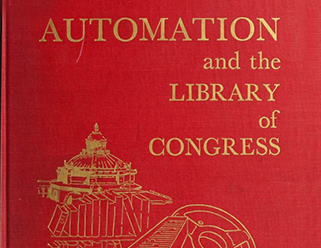 March 5, 2020: 1964 saw publication of the landmark “King Report.” Known formally as Automation and the Library of Congress, a survey sponsored by the Council on Library Resources, Inc., the report endorsed the benefits and feasibility of automation in the Library of Congress—and perhaps of a national system of interlinked research libraries. The seven-member survey team, chaired by Gilbert W. King, comprised experts in the application of computers, mathematics, operations research, and human engineering to data processing systems. The study was supported by a $100,000 CLR grant made in FY 1961. Read more.
March 5, 2020: 1964 saw publication of the landmark “King Report.” Known formally as Automation and the Library of Congress, a survey sponsored by the Council on Library Resources, Inc., the report endorsed the benefits and feasibility of automation in the Library of Congress—and perhaps of a national system of interlinked research libraries. The seven-member survey team, chaired by Gilbert W. King, comprised experts in the application of computers, mathematics, operations research, and human engineering to data processing systems. The study was supported by a $100,000 CLR grant made in FY 1961. Read more.
Feb. 27, 2020: Until the 1960s, music had been largely neglected in national and international bibliographies. In 1963, CLR grants $27,300 to the Music Library Association to record the holdings of American libraries for inclusion in the International Inventory of Musical Sources, a bibliography and finding list of manuscripts and printed works that then extended to 1800. The inventory was compiled under a joint commission sponsored by the International Musicological Society and the International Federation of Music Libraries. About 150 American institutions cooperated in preparing the bibliography. Read more.
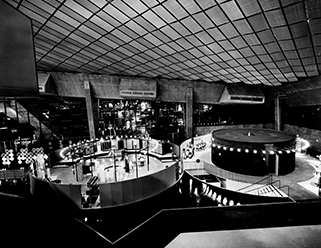 Feb. 20, 2020: In its largest award in fiscal year 1962, CLR grants $162,258 to Bolt Beranek and Newman Inc. for Research on Concepts and Problems of Libraries of the Future. With the proliferation of information in the 20th century, traditional methods of information management had become inadequate. More work was needed in technical storage and retrieval to make collections useful. The quest for a “push-button library” was under way. The CLR-funded research, under the direction of J. C. R. Licklider, looked at the functions that needed to be fulfilled by library systems; possible technologies to support their operations; an analysis of aims, methods, and problems in information storage and retrieval; and specific problems of man-machine communication and artificial intelligence. Read more.
Feb. 20, 2020: In its largest award in fiscal year 1962, CLR grants $162,258 to Bolt Beranek and Newman Inc. for Research on Concepts and Problems of Libraries of the Future. With the proliferation of information in the 20th century, traditional methods of information management had become inadequate. More work was needed in technical storage and retrieval to make collections useful. The quest for a “push-button library” was under way. The CLR-funded research, under the direction of J. C. R. Licklider, looked at the functions that needed to be fulfilled by library systems; possible technologies to support their operations; an analysis of aims, methods, and problems in information storage and retrieval; and specific problems of man-machine communication and artificial intelligence. Read more.
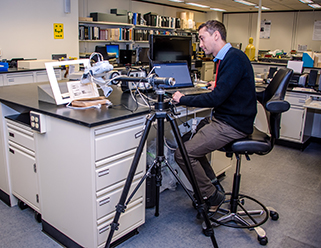 Feb. 13, 2020: We’re leapfrogging a few years to acknowledge a significant anniversary. Fifty years ago this month, CLR awarded $95,000 to the Library of Congress (LC) for equipment to furnish its new Preservation Research Office. The office—really a laboratory—was created to do both basic and practical research, primarily focused on issues relating to paper preservation. The laboratory continues its work today as LC’s Preservation Research and Testing Division (pictured left), under the leadership of CLIR Presidential Fellow and incoming Board member Fenella France. Read more.
Feb. 13, 2020: We’re leapfrogging a few years to acknowledge a significant anniversary. Fifty years ago this month, CLR awarded $95,000 to the Library of Congress (LC) for equipment to furnish its new Preservation Research Office. The office—really a laboratory—was created to do both basic and practical research, primarily focused on issues relating to paper preservation. The laboratory continues its work today as LC’s Preservation Research and Testing Division (pictured left), under the leadership of CLIR Presidential Fellow and incoming Board member Fenella France. Read more.
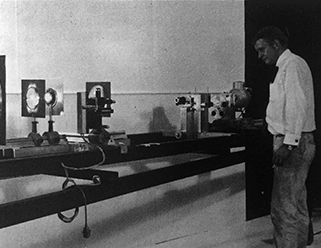 Feb. 6, 2020: In 1961, CLR funds eight grants relating to microcopying, including a $177,209 award to the Bell & Howell Company to develop a step-and-repeat camera for producing microimages by xerography. Although microfilming had been in use for some time, numerous problems with the medium had surfaced, ranging from the physical and bibliographic standards governing their manufacture and processing to problems with the reading equipment necessary for their use. Photo at left shows optical bench used as part of a study of factors involved in photocopying at high ratios of reduction. Read more.
Feb. 6, 2020: In 1961, CLR funds eight grants relating to microcopying, including a $177,209 award to the Bell & Howell Company to develop a step-and-repeat camera for producing microimages by xerography. Although microfilming had been in use for some time, numerous problems with the medium had surfaced, ranging from the physical and bibliographic standards governing their manufacture and processing to problems with the reading equipment necessary for their use. Photo at left shows optical bench used as part of a study of factors involved in photocopying at high ratios of reduction. Read more.
 Jan. 30, 2020: In 1960, CLR grants funds to the International Federation of Library Associations (IFLA) to convene the International Conference on the Principles of Cataloging in Paris in October 1961. The 105 participants, drawn from 53 countries and 13 international organizations, approve the Paris Principles, which become the basis for subsequent work on the revision of cataloging codes in many countries. Read more.
Jan. 30, 2020: In 1960, CLR grants funds to the International Federation of Library Associations (IFLA) to convene the International Conference on the Principles of Cataloging in Paris in October 1961. The 105 participants, drawn from 53 countries and 13 international organizations, approve the Paris Principles, which become the basis for subsequent work on the revision of cataloging codes in many countries. Read more.
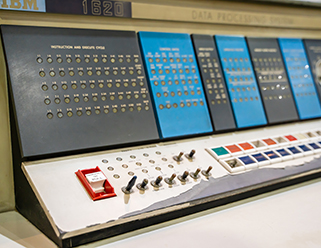 Jan. 23, 2020: In 1959, CLR funds a study to explore whether subject analysis, which relied on human labor, could be mechanized. PI Don R. Swanson, an information scientist most known for his work in literature-based discovery in the biomedical domain, publishes his findings in the 1960 Science article, “Searching Natural Language Text by Computer,” and lays the groundwork for subsequent research. Read more.
Jan. 23, 2020: In 1959, CLR funds a study to explore whether subject analysis, which relied on human labor, could be mechanized. PI Don R. Swanson, an information scientist most known for his work in literature-based discovery in the biomedical domain, publishes his findings in the 1960 Science article, “Searching Natural Language Text by Computer,” and lays the groundwork for subsequent research. Read more.
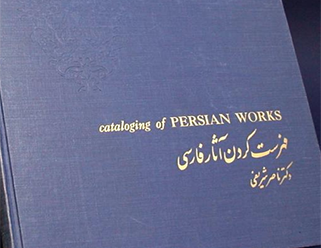 Jan. 16, 2020: CLR awards 31 grants in 1958, including one to Nasser Sharify, Deputy Parliamentary Librarian of Iran on leave, to develop a standardized code—which had not previously existed—for cataloging Persian publications. The American Library Association publishes the code in 1959. Read more.
Jan. 16, 2020: CLR awards 31 grants in 1958, including one to Nasser Sharify, Deputy Parliamentary Librarian of Iran on leave, to develop a standardized code—which had not previously existed—for cataloging Persian publications. The American Library Association publishes the code in 1959. Read more.
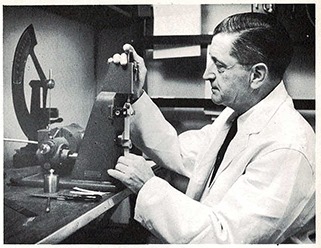 Jan. 9, 2020: In 1957, CLR awards one of its first four grants to William Barrow for research on causes of and remedies for book stock deterioration. His transfer of knowledge from chemistry to restoration becomes a key contribution to the field of conservation. Read more.
Jan. 9, 2020: In 1957, CLR awards one of its first four grants to William Barrow for research on causes of and remedies for book stock deterioration. His transfer of knowledge from chemistry to restoration becomes a key contribution to the field of conservation. Read more.
 The Council on Library Resources, Inc. (CLR) came into being on September 18, 1956, the date of its first meeting. Read this brief history of CLR, by Deanna Marcum.
The Council on Library Resources, Inc. (CLR) came into being on September 18, 1956, the date of its first meeting. Read this brief history of CLR, by Deanna Marcum.
